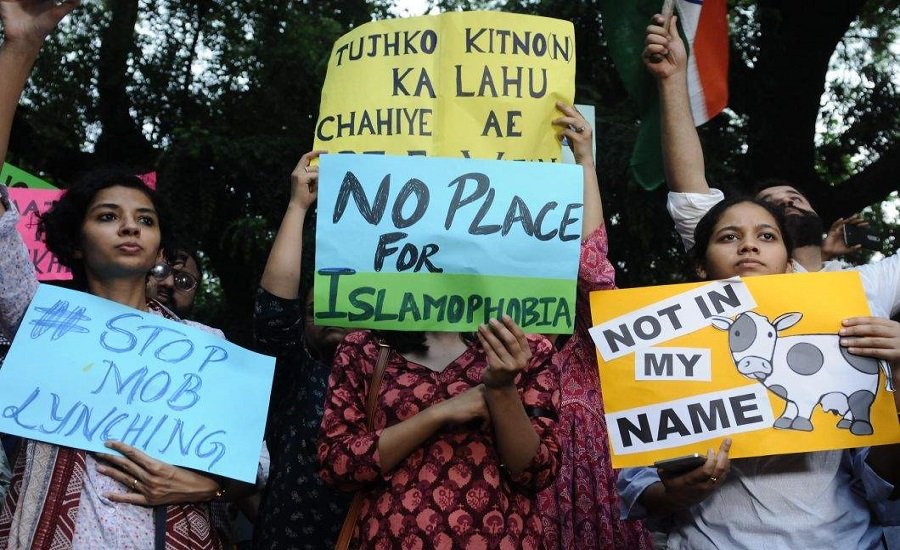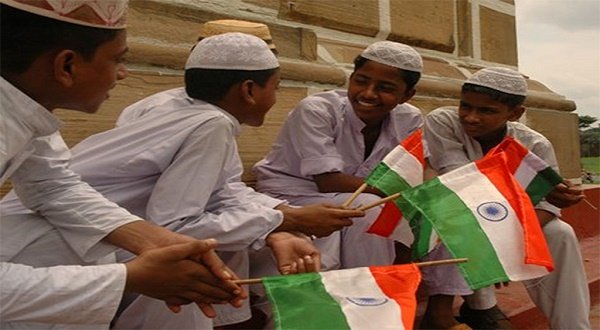
Given the growing government control and Hindutva influence over Indian media, once known for its independence, marginalised communities like Muslims are increasingly telling their own stories. But how successful and commercially viable are such initiatives?
Rehan Ansari | Clarion India
RECENTLY, an appeal by Ravish Kumar, the popular Magsaysay award-winning NDTV India anchor, calling on Muslims to float their own media house or a news channel to counter the ubiquitous anti-Muslim propaganda went viral on social media. However, he has denied issuing any such appeal which has generated a lot of debate among Muslims for and against the need for Muslim-owned news channels.
There is not an iota of doubt that the media, specifically most of the news channels, are spewing venom against Muslims. But it would be naïve to assume it as “complete truth”. The media today, in totality, has lost its objectivity which is sacred to journalism and has become a tool and an apologist of the ruling party. It is also guilty of suppressing the facts and critical news stories, even to the extent that dissent with the government is criminalised, demonised and even abused on a live show.
They question the opposition and also the military as was witnessed recently during the showdown with China when an anchor of a famous news channel reportedly said, “It is the responsibility of the Army to stop the infiltration at the border” when people denounced the Modi government failure in Ladakh. Poor farmers’ suicide are also misreported and even a conspiracy theory is created about the new farm suicide numbers, according to Rukmini S, a data journalist.
Oxfam India and Newslaundry, in August 2019, released a report, “Who Tells Our Stories Matter: Representatives of Marginalized Caste Group in Indian Newsrooms” which found the under-representation of Dalits and dominance of the upper castes in the newsrooms.

The Indian media, the fourth pillar of democracy, has turned hostile to the very people it has traditionally served.
The media behaviour did not change overnight but followed a process. Readers and viewers or, in other words, the Indians, are termed and treated as consumers. It has turned from the Nehruvian socialist conduct to the hardcore capitalist and now the political party in the government with their corporate friends is setting the agenda and the narratives in the country through news channels and their blue-eyed anchors.

Some bravehearts, brilliant minds, and committed journalists are trying to intervene and stop this anti-people approach. They are trying hard to distinguish fake news from the real ones, trying to write news and stories in the public interest, exposing the corruption and double standards not only of the politicians but also of their fellow journalists.
Newschannel broadcasting in India requires government scrutiny and approvals for uplinking and downlinking, clearances from MHA for the directors of the company, formation of a company from the Ministry of Corporate Affairs, etc. Besides establishment cost, operating cost and, after the government clearance, the most important part is the distribution of TV channels which determines its visibility for the viewers and generates ‘the TRP’, a prerequisite for the advertisers.
It is a fact that any newspaper or news channel cannot survive on its own or the advertisement revenue only. Starting not one but a group of channels in a different genre, like general entertainment channel (GEC), which gets most of the eyeballs, sports, and film channels that have more TRPs than a news channel, is one of the business strategies followed today. Companies provide enhanced visibility to the advertisers in this competitive market with the channels in a different genre.
Another strategy is to own the distribution network i.e. the DTH network like the Zee-owned Dish TV, to neutralize the distribution cost. More so, if the governments, both at the Centre and state, lend their support in the form of advertisements for their social and welfare schemes and subsidies or allotment of lands for the operating cost to maintain their sovereignty and independence. No news organisation can survive on their own without government support or other revenue models for the operating cost, which is huge and recurring.
Some prominent organisations and Muslim activists have also been trying to do their own bit. But with a few exceptions, most of them are struggling to survive. Madhyamam, a Malayalam daily with 18 editions, 9 in India and 9 in the Gulf region and its Media One TV channel, could lead the list of successful media ventures by Muslims, both in terms of their approach and commercial viability. Their coverage is not limited to the Muslim-only news, but their success is attributed to their mainstream news coverage with the pro-people approach and a team of secular journalists.
The digital revolution has unlocked the world–the world without borders–and we are the global citizens now. This globalisation has empowered common people and given them the platform to express their views. It can be understood by an example that although an Indian can’t elect the US President but can surely influence Americans in favour of or against Donald Trump.
Digitisation has created an opportunity to reach the people directly or to the target audience through web portals and web channels. This area still has less government and legal interference and has increased the audience base. The cost of establishment is also limited and viewership is not dependent on highly-professional distribution companies.
In the digital world, content is the king. Dhruv Rathi can get millions of subscribers and followers on YouTube, Saket Gokhale can expose corruption on Twitter, Rana Ayyub’s articles in Washington Post and Swati Chaturvedi’s columns in Gulf News can be read in India. Rohini Singh can break the stories on The Wire, a news portal.
If Arfa Khanum Sherwani can debate on any issue on The Wire, Barkha Dutt can travel all over India and cover the plight of poor and migrant laborers during lockdown due to pandemic in her Mojo Story. The operating cost requires mainly for hiring good journalists, a digital marketing team and some technical knowhow.
Understanding the liberty and freedom in this field, some individuals, activists, journalists and organisations have tried for news portals which mostly focus on Muslims and their issues and concerns. TwoCircles.net, MuslimMirror.com, Beyondheadlines.in, Ummid.com, ClarionIndia.net, IndiaTomorrow.net and Maeeshat.in are some prominent news portals in this category.
Although they have served well and are aiding more than their capacity by bringing out many stories that influenced even the mainstream media, every portal, sadly, has its painful struggle and a tragic story related to raising capital, donations and crowdfunding. It is the subject of research and documentaries which is a prerequisite for any Muslim-only media venture in India. Most of their editors and owners are known to me personally since I am a contributor. The struggles of each one of these portals require a separate and detailed article.
The situation today demands more pro-people news portals and channels established for justice and peace to counter the communal and divisive narratives of the mainstream media.
There is also the space for Muslim-centric news portals like BlackNewsChannel.com based in Florida, USA, launched in 2020. In its About Us section, the blacknewschannel.com explains its mission is, ”to provide intelligent programming that is informative, educational, entertaining, inspiring and empowering to its African American audience.”
The fact of the matter is that we are living in a time in India where even Kapil Sibal, former Cabinet Minister and leader of the Indian National Congress, could not run a news channel, Tiranga TV. Raghav Bahl, the father figure in the news channel industry at par with Prannoy Roy, had to sell his Network18 group and he is still struggling to get the licence for the news channel. He has also turned to the web world and started The Quint, an English and Hindi general news and opinion website.
At a time when Barkha Dutt, Karan Thapar, Punya Prasun Bajpai, Abhisar Sharma, the leading names in news channels, who question the government, are cast aside, web portals are the only viable option left till we see any regulations curbing the freedom of the digital world.
Rehan Ansari is a Mumbai-based journalist and has worked with Sahara Samay, CNBC and twocircles.net. The views expressed are his own and do not necessarily reflect Clarion India’s stand

